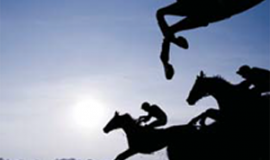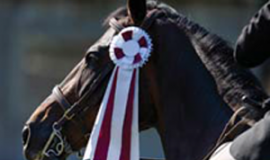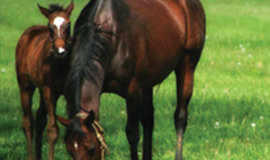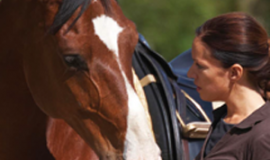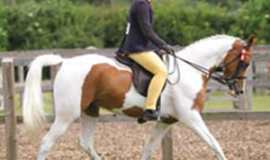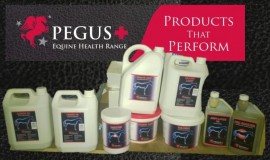Prepare for good grazing
After a long winter horses will again be back on lush pastures. The transition from indoor feeding to grazing requires proper preparations, if you are to avoid digestive problems and maintain a good health.
Needless to say, fences and gates must be in good technical condition. Take some time to tidy up the field. Remove accumulated trash (plastic, bottles, sharp items) that have “stranded” in the pasture during winter. Control the water supplies, and provide salt licks (sodium chloride). Horses should be wormed before they are let out to graze. Contact your veterinarian and get a plan for anthelmintic treatment schedules that functions in your district and matches your horses. The latest version of Pegus PC-Horse contains a planning module that allows you to enter your parasite treatments.
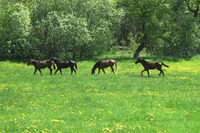
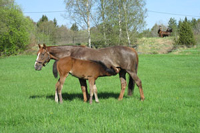
A gradual transition from indoor feeding to pasture is crucial. During this transition period, when the horses gradually gain access to more and more grass, you should continue to give roughage (hay or silage) in the morning (before pasture) and in the evening, while reducing the amounts of concentrate. Allow for a gradual increase in the time on pasture over one to two weeks, before the horse will be out all day.
Horses graze pastures unevenly, and have favourite areas where they quickly eat most of the available grass, whilst avoiding other areas (typically where manure is dropped). Often it looks as if there is plenty of grass left in a field, while in reality there is much less that the horses will eat. Monitor the amounts of “available” grass carefully, and be sure to move the horses to new pastures in time.
Mares with foals and young horses should have the best pastures. It is important to monitor grass abundance and quality. There should always be plenty of grass available in the pasture, or you will find that both broodmares and young horses quickly lose body condition. If practical, large pastures should be subdivided and the smaller plots be used on a rotational basis.
Adult horses and ponies can do well on pastures of lower quality, provided that they are not trained or used excessively for riding. For horses with a history of laminitis more extensive pastures will be convenient.
Periods of drought may be expected at different times during the spring and summer season. Pasture quality drops quickly when the soil humidity is low. Look carefully for changes in grass availability and reduced body condition during a draught period !
For further information and advice on your feeding plan contact Pegus Horse Feed
www.pegus.ie info@pegus.ie
Free Phone Helpline R.O.I.= 1800-378463 UK = 0800 011 4182

